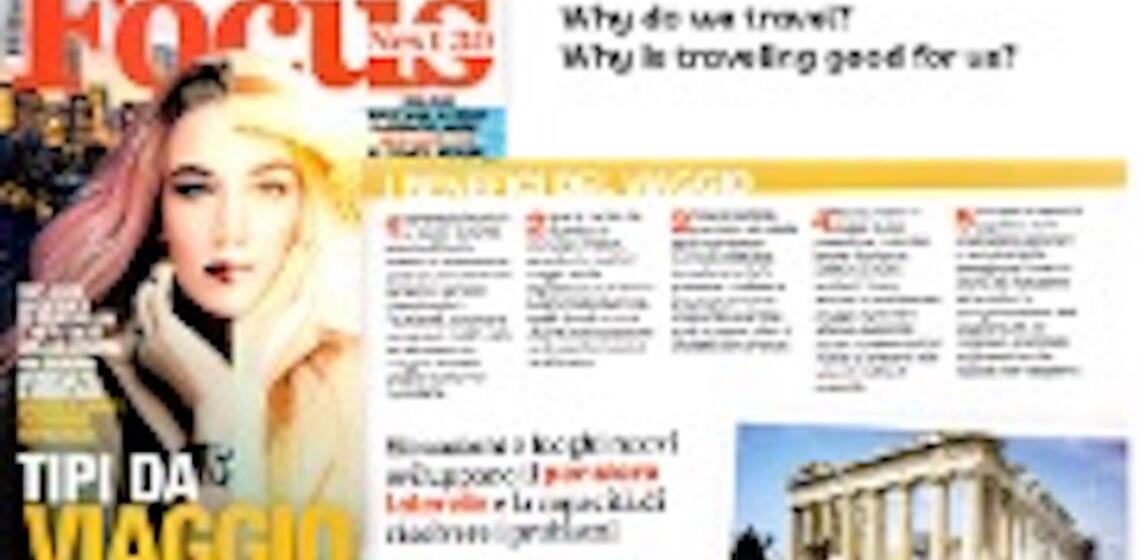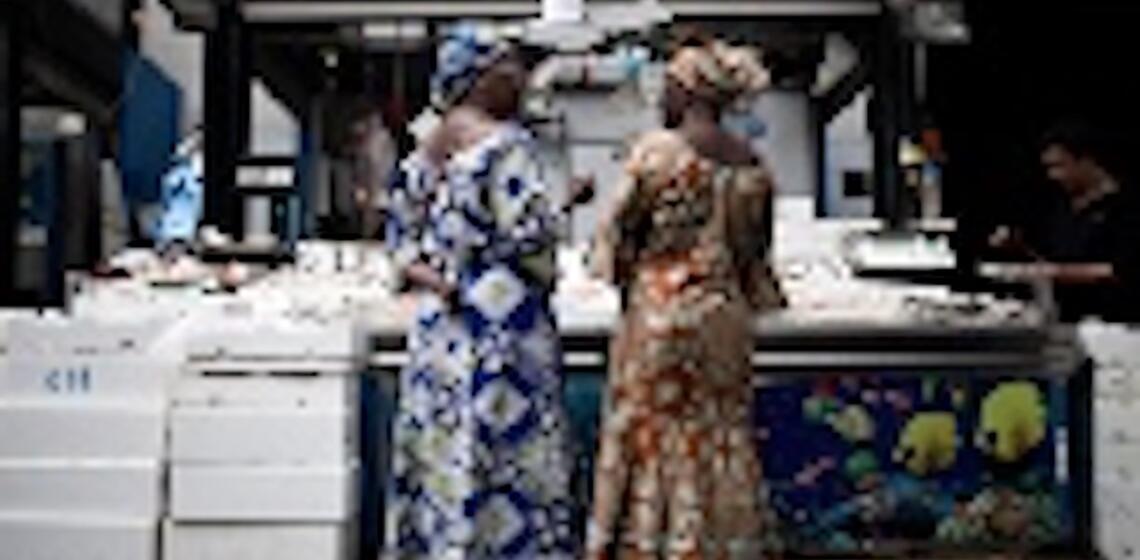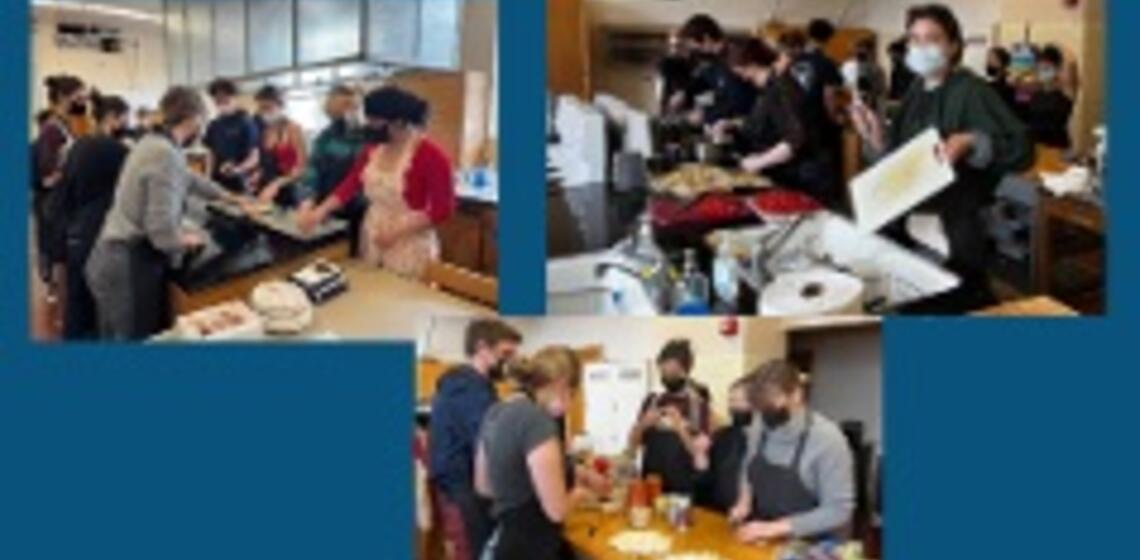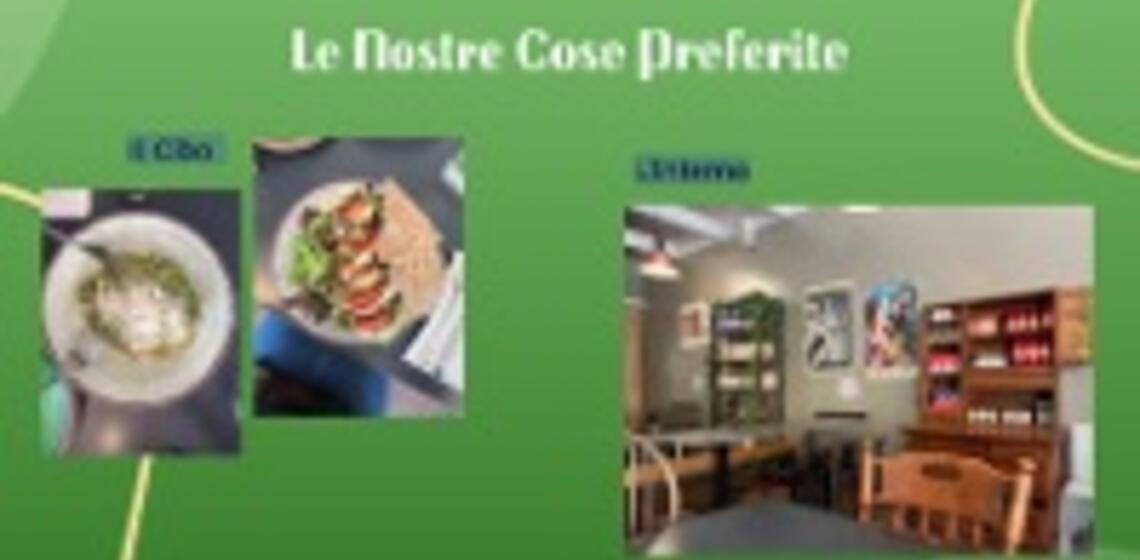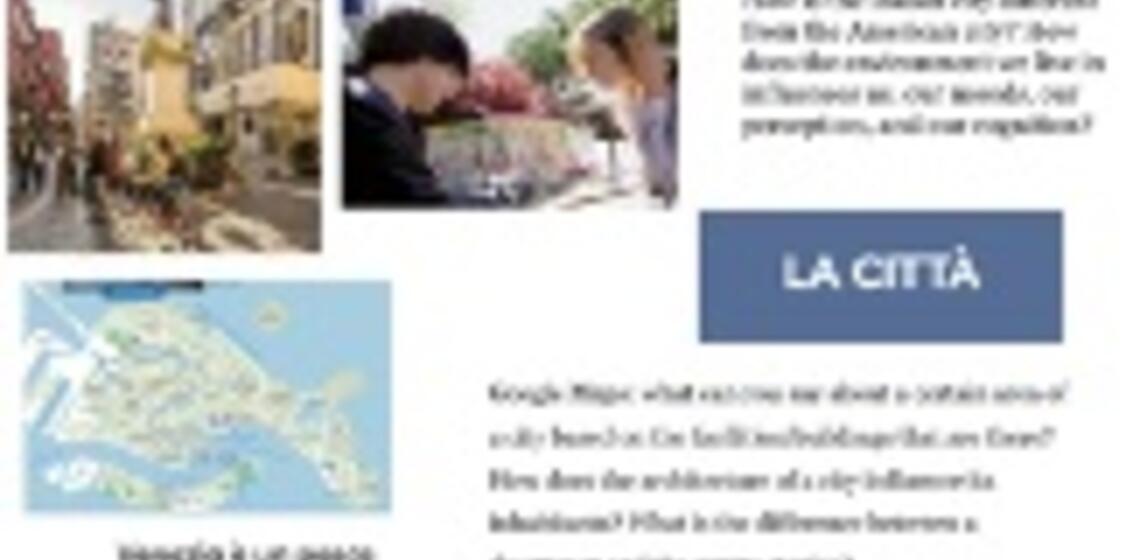1: Re-imagining Teaching with Creative Agency
An Interview with Benjamin Spanbock, Continuing Lecturer, College Writing Programs
First Step Discovery aims to not only transform the student experience of beginning required courses, propelling students on an accelerated path towards their majors and careers, but also transforms the teachers who have trained in and have utilized far more traditional skills-based teaching approaches for early requirements and other courses.
How has First Step impacted you?
Ben Spanbock, a continuing lecturer in the College Writing Programs, acknowledges "I can’t imagine any other way to teach now that I have taught over 200 students for the past six semesters using the First Step Discovery approach."
Spanbock explained “First Step Discovery has helped me fundamentally reimagine my approach to teaching early undergraduate rhetoric and composition classes.” The approach allowed him to introduce “creative agency” as the driving force in his classes.
How has First Step impacted your students?
“Putting creative agency at the center of the learning process allows students to connect with and draw meaning from that work in powerful ways. Given the opportunity to work as creators, students become invested in that work to a degree that far exceeds what one would expect if simply teaching and testing on the issues.”
Creative agency where students become creators, he notes, translates into passion and preparation for students in terms of future major and careers. “Creating original material invites inquiry on both process and subject matter.”
Can you provide any student examples?
In a Translation in Practice course team taught by Spanbock and Chisako Cole using the First Step approach, “a student's original translation work becomes the basis for developing a body of English language materials that utilize a diverse set of academic skills, including reading, research, memoir writing, linguistic theory, reflection and knowledge specific to the field of translation itself. “

According to Diana Nguyen, “her project unveiled the arduous challenges my parents faced as they navigated through an unfamiliar environment. This newfound knowledge became a bridge that connected me to an understanding of my family roots. Through this project, I came to appreciate the resilience and aspiration that defines my family’s immigrant experience.”
How does First Step help students prepare for the future?
Spanbock observed that “As a result of this creative agency, students are passionate and empowered when bringing and making connections to their own lived experiences, as they work to understand and apply course knowledge to that process in an authentic, individualized and human way. This type of experientially grounded learning is hugely impactful and prepares students to think and act creatively within their respective fields and specializations.”
2: Reshaping Traditional Korean Classes with Experiential Learning
An interview with Minsook Kim, Senior Lecturer, East Asian Languages & Cultures, Korean
Minsook Kim committed to the First Step Discovery approach over three years, teaching some 300 students in 15 classes in the Korean Language program. Kim is a living example of how a teacher can “reshape” traditional skills- and drill-based learning of languages and transform it with a discovery approach for introductory Korean classes as well as advanced fourth and fifth year Korean. She infused “experiential learning” with explorations of primary sources and sustained activities.
How has Berkeley led the way for Korean and Heritage Language students?
Berkeley was the first university to offer Korean in 1943 during WWII when the use of Korean was banned by the Japanese. Today Berkeley is one of the few universities with a separate track for heritage speakers in many languages.
Kim broke out student activities into a five step process even for beginning learners: prepare, experience and inquire, discover, execute and reach out to communities, documenting the experience in final projects. Using their Korean, her students visited numerous locations with special meaning for Koreans including the BAMFPA museum, C.V. Starr East Asian Library, the WWII Comfort Women memorial in San Francisco and a book talk hosted by the University Center for Korean Studies.
In fact, during a field trip to the university’s C.V. Starr East Asian Library – holding one of the finest collections of Korean artifacts and texts – her students saw and read in Formal Korean the first Korean textbook used at Berkeley in 1943.
“I am so happy to take this class because I was not sure about learning my heritage language. After taking this course, I realized how ALIVE Korean is and I feel committed to learning Korean even after graduation. I am already looking for an adult Korean class in New York where I will start working.”
After the discovery stage, how did students take action?

Students in Kim’s advanced Korean Culture & History Class successfully petitioned the Academy of Art to complete its red logo marring the memorial view for the WWII Comfort Women who were treated as sex slaves by the Japanese. Instead, the Academy actually removed the offensive red circle reminiscent of the Japanese flag, thus preserving the beauty and intent of the memorial. Her students expressed amazement at the effectiveness of their social action that included filing petitions, contacting the Comfort Women Coalition, the Korean Consular office and the media.
3. Instilling a Sense Of Belonging
An Interview with Donnet Flash, Continuing Lecturer, College Writing Programs
Donnet Flash, Lecturer in Reading and Composition, a first-year requirement within the College Writing Programs, was teaching first -students during the height of the pandemic.
"First Step Discovery transformed my teaching by finding creative ways to foster meaningful collaborative learning that helps beginning students develop a sense of belonging at Cal and recognize the value (and brain power) in classrooms that are student-centered.”
How did your First Step Discovery Teaching Group help you?
Flash turned to her Discovery teaching group to help her cultivate a sense of belonging for students when the usual anxieties of first-year students were compounded by pandemic isolation. “That conversation inspired me to revise my course theme, content and methodology to encourage students to reflect on and share ideas on the struggles and insights with loneliness and/or belonging.”
What were your goals for your First Step Discovery classes?
Flash’s goal as a teacher is “getting students to think and write more clearly and especially to see the value of talking to and listening to other people! First Step Discovery’s emphasis on collaborative learning and on cultivating a sense of belonging has, indeed, been transformative.”
According to one student, “I learned that when we spend a large amount of time working on a piece of writing, we can become too close to it. This closeness can lead to familiarity bias, where we become blind to errors or weaknesses in our own work. Classmates, approaching the document with a fresh perspective, can offer a new set of eyes and provide valuable insights into areas that may require improvement.”
How did your students respond to efforts to instill a sense of belonging with your course?
Students have responded well to the efforts to make courses more relevant and meaningful to their lives. One student spoke to how female Latina role models in the texts she read increased her knowledge and changed her.
“I continue to join organizations to help underrepresented communities strive in times of distress. I would not have the courage to do so if it wasn’t for this course. I truly mean it. America doesn’t acknowledge the enriched history of minorities in America."
4. Exploring Concepts of Space to Learn Italian
An Interview with Cristina Farronato, Lecturer, Italian Studies
Crisitina Farronato, Lecturer in Italian Studies, envisioned a discovery journey centered around the theme of space for her Italian 1 and 2 language classes that would make a connection between language learning inside the students’ heads and the students’ interaction with the space outside.
“Language itself is seen as space, for example in dictionaries or in grammars, and in the idea of language as structure. It also has psychological/mental space, and now, thinking about AI and Large Language Model (LLMs), we need to also consider cyberspace and latent space.”
Why does the concept of space help you learn a language?
Farronato observed that the “context of language learning is often reduced to a person-to-person interaction, often neglecting to think about the space of the human and non-human world.”
Proficiency in a language is firmly rooted in the concept of space, Farronato noted. “Usually people who achieve a high degree of second language proficiency learn and use language in multiple settings over a long period of time. A language is put together as a local combination of things, places and people, which also have social and political implications. The aim is therefore for the students to learn through the interaction with the language resources in the environment.”
How did you incorporate the concept of space in your classes and assignments?
In Italian 1, students began by speaking and writing in Italian about indoor and outdoor space, space as depicted in movies, as well as food and space like restaurants and corner stores. Students watched the film Bicycle Thieves, in which careful consideration is given to the representation of postwar Rome. Students discussed in Italian “how space affects the characters and how space can be renegotiated throughout history.” In Piazza Vittorio, where there used to be an open market where Italians found cheap products, there is now a market where immigrants sell typical products from their home countries.
In Italian 2, students explored in Italian a larger space, including “The House,” Traveling,” “The City,” and “Metaphorical Space.” The course used every possible learning modality: learning the difference between house and home, a difference that linguistically does not exist in Italian; how to book a vacation and restaurant; watching a film on Italian migration and searching for traces of Italians in Berkeley’s community; Italian influencers who write about latent space like AI, for example.
Farronato explained that the idea of space and the assignment incorporate most of the topics and vocabulary that are covered in a more traditional approach in the textbook.
Why did you decide to experiment with the concept of space in Italian?
“Learning a second language is a matter of seeing and dealing with the world in new ways. Language learning depends on an active learner who is in tune with the semiotic resources that the environment makes available. In second language learning, the target language is a scarce resource; therefore the learner must construct an environment in which it is present. This is why I’ve been trying to experiment with the concepts of space and learning environment.”
How did the discovery approach affect your teaching?
As a result of her experimentation, Farronato, developed some learning objectives for her classes:
- Make learning the language more meaningful and purposeful
- Transcend the classroom’s walls and create a connection with the outside environment
- Become more aware of and better create a learning environment
- Improve the study and memorization of vocabulary
Why is the study of languages so important today?
“In today’s world the spatiality of second-language learning is shaped by the forces of globalization (who gets to learn which language in different parts of the world) and by global mobilities. So, language learning environments are created by a negotiation between the individual learners and the global production of space.”

 “I have been greatly enjoying being a part of this First Step Discovery teacher’s group, whose interdisciplinary nature has expanded my perspective and introduced fresh ideas. This group has allowed me to undergo the Discovery process firsthand, much like my students experience in the classroom. It functions as a working lab where we inquire, collaborate on solutions, develop collectively, and engage with the wider community regarding our project.”
“I have been greatly enjoying being a part of this First Step Discovery teacher’s group, whose interdisciplinary nature has expanded my perspective and introduced fresh ideas. This group has allowed me to undergo the Discovery process firsthand, much like my students experience in the classroom. It functions as a working lab where we inquire, collaborate on solutions, develop collectively, and engage with the wider community regarding our project.”
